Covering a territory with an area of 603,628 square kilometers, Ukraine is the largest country entirely within Europe.
The below map shows the Oblasts of Ukraine (you can click on the map to enlarge it):
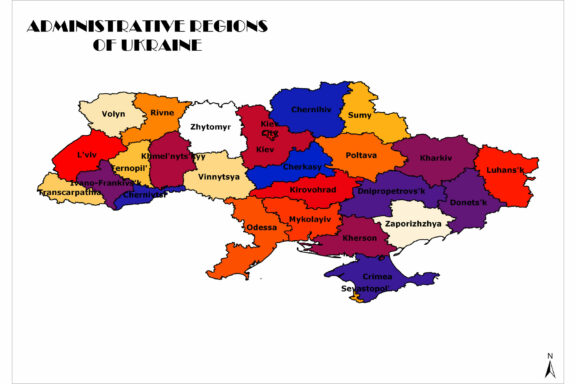
Ukraine is divided into 27 first-level administrative divisions, which consists of 24 oblasts, 1 autonomous republic and 2 cities with special status.
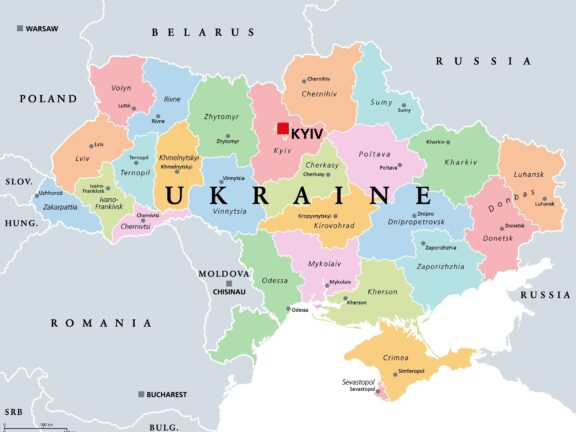
An oblast is an administrative territorial division within former Soviet republics, which include Ukraine. Although “oblast” can also be used in English, it is often translated as “region” or “province.”
However, referring to oblast as “region” can be misleading, since the same translation can be used for “raion” a political subdivision that stands for “region,” “district” or “county.”
Oblasts of Ukraine:
Chekasy Oblast
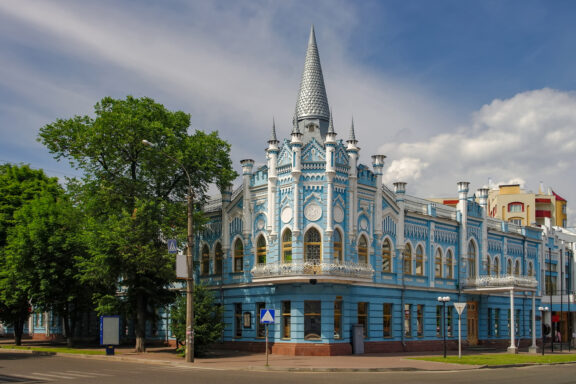
Resting along the banks of the Dnipro River, Cherkasy Oblast is home to 1,174,637 residents. 92.49% speak Ukrainian as their first language while 6.66% speak Russian. Other languages like Belarusian, Armenian, Bulgarian, Romani, and Moldovan have speakers amounting to less than 1%.
The dominance of Ukrainian language in Cherkasy Oblast comes as no surprise. Known as the birthplace of Ukrainian writer Taras Shevchenko, the region is hymned by the bard’s revolutionary work.
Regarded as the father of Ukrainian literature and linguistics, every Ukrainian can quote a line from Shevchenko’s works, and his verses continue to set hearts ablaze to this day.
Tourists can visit the Taras Shevchenko Homeland National Reserve and pay homage to the Ukrainian genius by visiting his tomb and memorial museum in Kaniv.
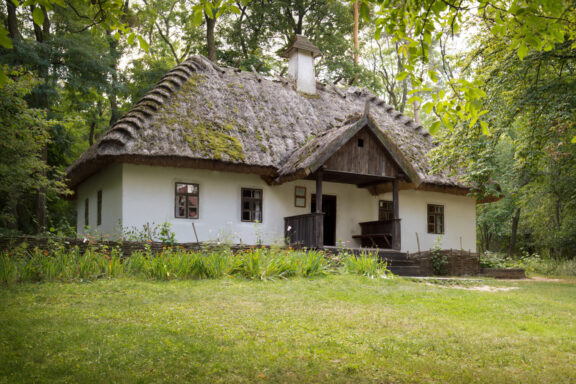
Cherkasy city’s St. Michael’s Cathedral, Sofiyivka Park, and the iconic building of the former Sloviansky Hotel are also worth seeing.
Despite no reports of tourist attractions being damaged by the ongoing Russian invasion, trips to Cherkasy Oblast are currently unsafe.
Chernihiv Oblast
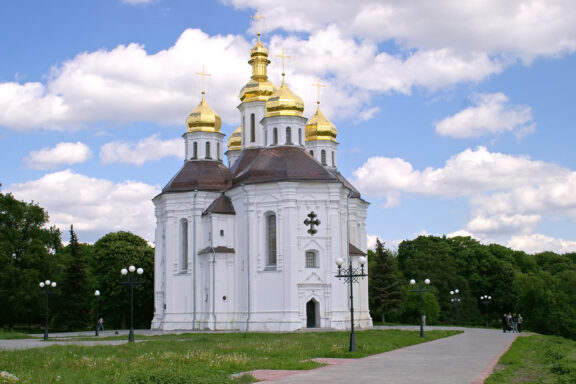
The Chernihiv Oblast is a province in northern Ukraine with a population of 968,159.
Despite bordering Russia, only 10.26% of its residents speak Russian. 89.05% speak native Ukrainian while other languages like Belarusian, Bulgarian, Armenian, Moldovan, and Romani have speakers amounting to less than 1%.
Top attractions within the Ukrainian oblast are mostly religious sites like the Trinity Monastery and the Saint Anthony Caves.
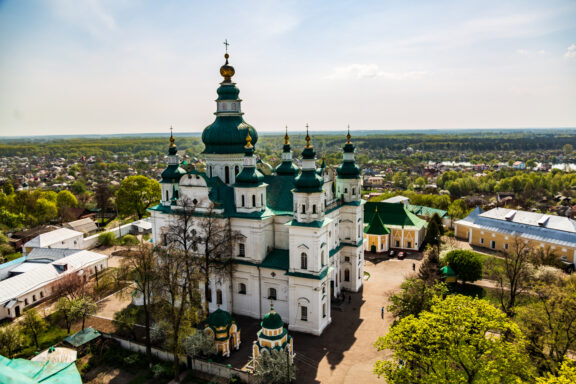
Tourists can also find old cathedrals like the Saviour-Transfiguration Cathedral and the Church of Boris and Gleb in Dytynets Park in Chernihiv city.
The Church of Resurrection of Christ, Pyatnytska Church, and St. Catherine Church are other religious sites in the oblast.
Chernihiv Oblast was heavily bombed during the Russian occupation. 70% of Chernihiv City is extremely destroyed.
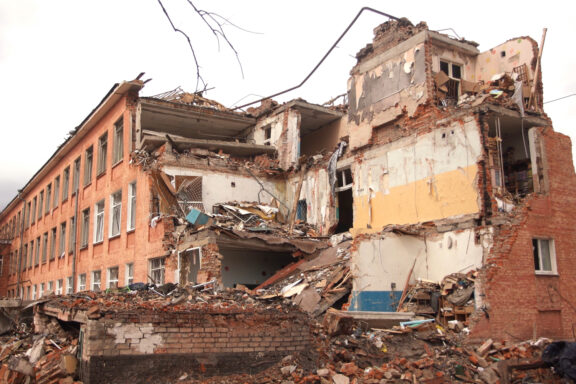
The Church of Resurrection of Christ and St. Catherine Church were extremely damaged by heavy Russian ammunition. As such, it is not safe to travel to Chernihiv Oblast.
Chernivtsi Oblast
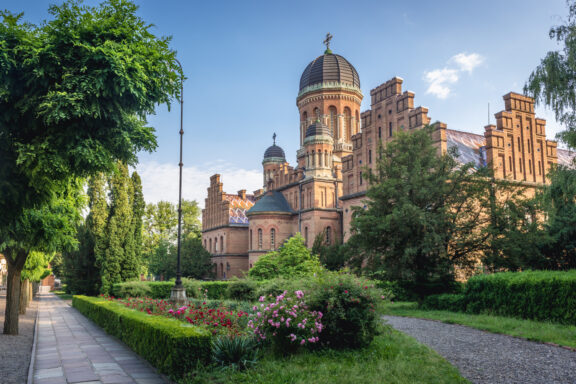
Sharing a border with Romania and Moldova, Chernivtsi is a Ukrainian oblast in Western Ukraine.
The oblast is the smallest in Ukraine and is home to 893,501 inhabitants, 75.57% of which speak Ukrainian. Meanwhile, 11.85% speak Romanian, 6.79% speak Moldovan, and 5.27% speak Russian. Other languages like Polish, Belarusian, Bulgarian, Armenian, German, Romani, Hungarian, and Hebrew have speakers amounting to less than 1%.
Chernivtsi National University is the most popular tourist attraction in the oblast and is what puts the region on Ukraine’s tourist trail. The institution’s bricked walls and grand marble halls evoke a sense of timeless magic.
Other outstanding architecture can be spotted on Olga Kobylianska street. Searching for the famous Ship House, getting lost in Chernivtsi city’s old town and a day trip to Khotyn Fortress are also must-dos in Chernivtsi Oblast.
Although the region has been spared from violence, the Russian invasion makes it dangerous to travel to any of the Ukrainian oblasts.
Dnipropetrovsk Oblast
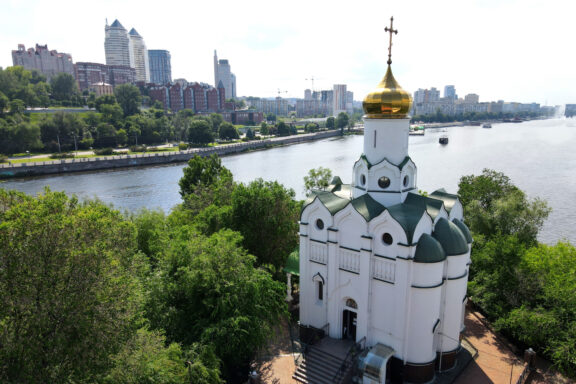
Dnipropetrovsk Oblast is a Ukrainian province in south eastern Ukraine with a population of 3,138,726. 67% speak Ukrainian, while 31.91% speak Russian. Other languages such as Belarusian, Armenian, Bulgarian, Gagauz, Moldovan, German, Polish, Romani, Hungarian, and Hebrew have speakers amounting to less than 1%.
Dnipro city offers plenty of attractions like the Khrennikov House, the Dmytro Yavornytsky National Historical Museum, the building of the Central Post Office, the Monument of Glory, and the Dnipro National University.
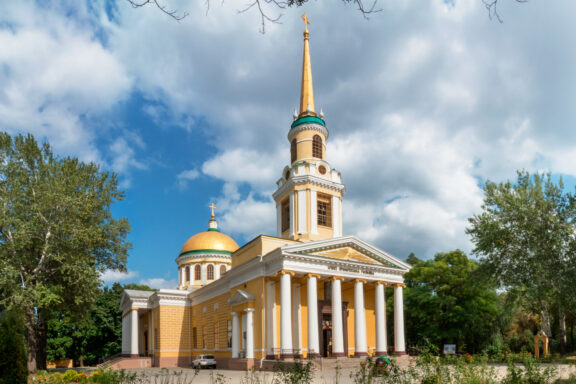
The region is also abounded with religious sites of different faiths like the Transfiguration Cathedral, the Holy Trinity Cathedral, the Lutheran Church of St. Catherine, the Roman Catholic Church of St. Joseph, and the Golden Rose Choral Synagogue.
Dnipropetrovsk Oblast has been spared the worst bombardment; however, it does not make the province safe to visit.
Donetsk Oblast
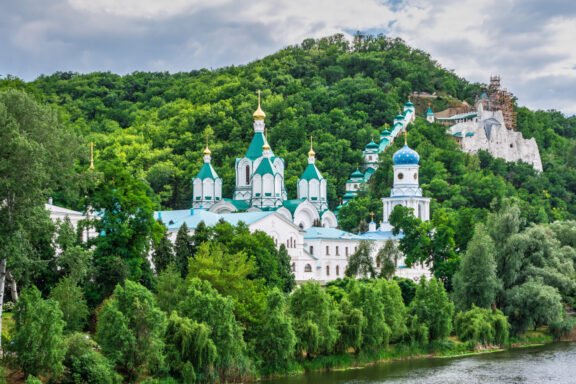
Donetsk Oblast, home to 4,087,395 residents, is an oblast situated at the eastern part of Ukraine.
Bordered by Russia, 74.92% speak Russian while 24.10% speak Ukrainian. Other languages such as Belarusian, Armenian, Bulgarian, Moldovan, and Romani have speakers amounting to less than 1%.
The primary attraction in the Ukrainian oblast is Sviatohirsk Lavra, a quintessential spiritual center in eastern Ukraine.
The salt mines of Artyomsol are also open to tourists. The 200-kilometer subterranean network houses marvelous salt sculptures, a salt church, and a salt sanatorium for respiratory illnesses.
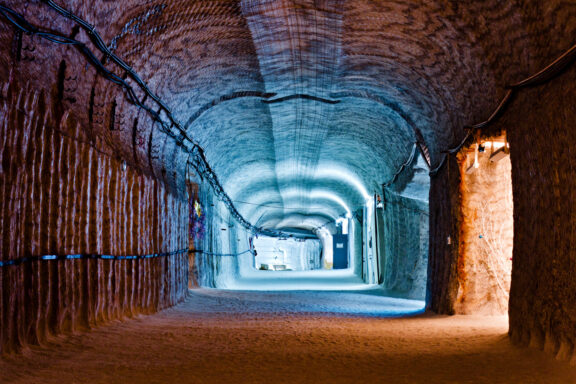
Parts of Donetsk Oblast are held by the self-proclaimed Donetsk People’s Republic. Since 2014, the region has been a hotbed for heavy fighting between the Ukrainian army and Russian forces and Russian-backed separatists.
Cultural and historical sites like The Sviatohirsk Lavra were destroyed by Russian aggression, along with many of the oblast’s cities, including the besieged Mariupol.
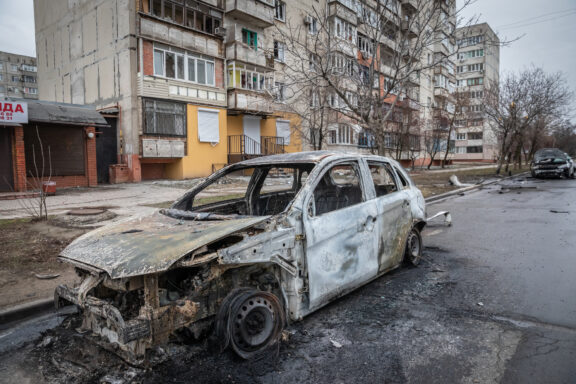
Although the national army’s defense is momentarily holding the Ukrainian province, traveling to Donetsk Oblast is highly discouraged until the occupied parts of the region are demilitarized and returned to Ukraine.
Ivano-Frankivsk Oblast
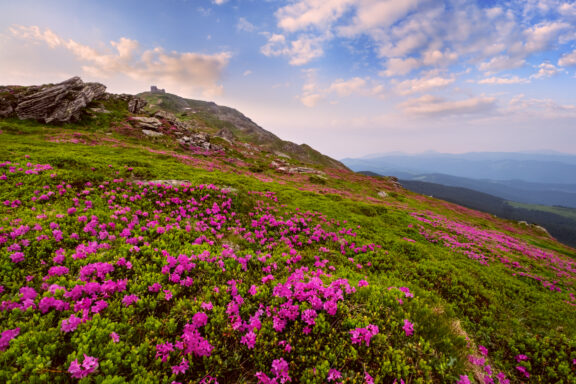
Ivano-Frankivsk Oblast is a Ukrainian province in the southwestern part of the country, bordering Romania.
The population is 1,358,383 with 97.81% speaking Ukrainian as their mother tongue. 1.78% speak Russian, and other languages like Moldovan, Armenian, Polish, Romani, and Hungarian have speakers amounting to less than 1%.
A third of the oblast is nestled in the Carpathian Mountains, including Mt. Hoverla, the highest point of Ukraine. The mountain also sits on Chornohora Range, which encompasses the observatory on Pip Ivan and the high mountain lakes of Nesamovyte, Maricheyka and Brebeneskul.
Besides lakes, the region also has waterfalls like Maniava, Probiy, and Narinetsky.

Since snow blankets the slopes of the Carpathians for several months, the region is also a hotspot for winter recreation. Bukovel Ski Resort stands on the top spot of the oblast’s travel industry.
To get a glimpse of traditional folk art such as pysanka, Ukrainian Easter eggs adorned with natural and spiritual motifs that herald goodness and rebirth, tourists can stop by the egg-shaped Pysanka Museum in Kolomiya, which houses over 12,000 painted Easter eggs.
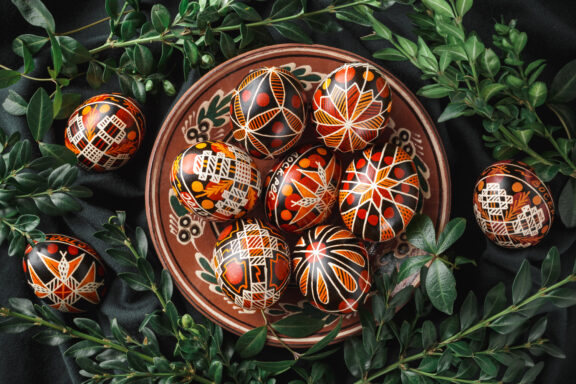
Ivano-Frankivsk Oblast offers a destination for every kind of traveler; however, due to the Russian invasion, it is not recommended to visit these places.
Kharkiv Oblast
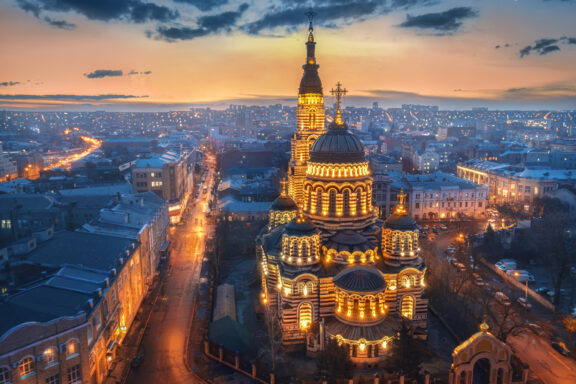
Kharkiv Oblast lies in northeastern Ukraine, bordering Russia. Its population is 2,618,198. 53.8% speak Ukrainian, and 44.29% speak Russian. 1.9% speak other languages like Belarusian, Bulgarian, Armenian, Moldovan, Polish, Romani, Hungarian, and Hebrew.
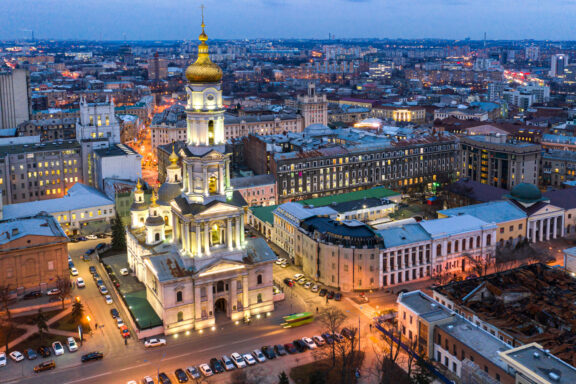
Kharkiv city is the region’s top tourist destination. Visitors can marvel at the Orthodox architecture of the Annunciation Cathedral, the Assumption Cathedral and the Holy Shroud Monastery. They can also go for a walk at family-friendly Gorky Park, the Botanical Garden and the lively Freedom Square.
Kharkiv city is now largely devoid of life. Air strikes hit both Gorky Park and Freedom Square. The Assumption Cathedral was also severely damaged, along with The Palace of Culture. Many other tourist sights in the oblast have been destroyed since the Russian invasion.
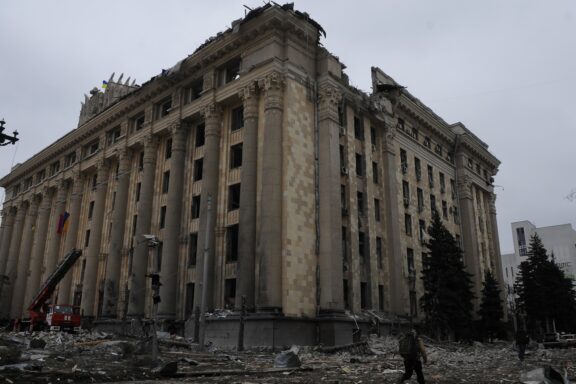
Although the region remains under Ukrainian control, it continues to suffer from intense bombardment.
Kherson Oblast
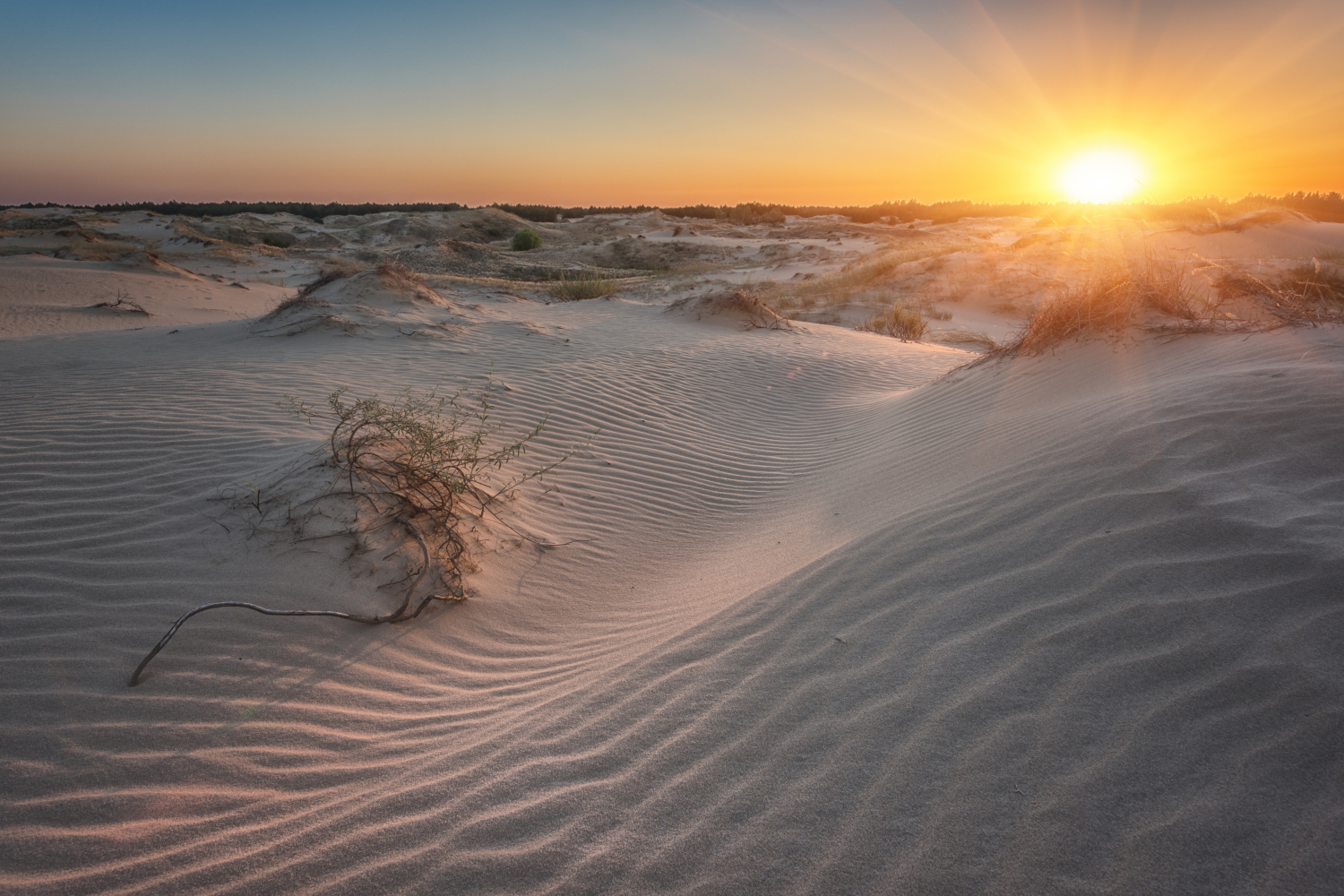
Kherson Oblast is a province in southern Ukraine renowned for being the leading producer of the nation’s vegetables and gourds.
The Ukrainian oblast is inhabited by 1,015,275 people. 73.19% speak Ukrainian as their first language, while 24.86% speak Russian. 1.8% speak other languages like Belarusian, Bulgarian, Armenian, Gagauz, Crimean Tatar, Moldovan, German, Polish, Romani, Romanian, and Hungarian.
Ecotourism is the primary contributor to the region’s tourism industry. After all, it is home to Oleshky Sands, Europe’s largest desert.
Askania Nova Biosphere Reserve, the world’s oldest steppe reserve with over a thousand animals, is another natural attraction in the Ukrainian region.
Kherson Oblast also has its very own Grand Canyon. Stanislavsky Reserve is perfect for outdoor recreation and admiring breathtaking views of cliffs, ravines, and boulders overlooking the waters of the Dnipro Estuary.
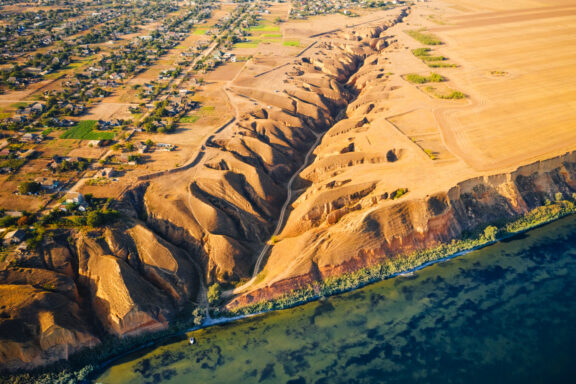
The pink lakes of Lemuria, Genichesk, and Syvash are also popular tourist destinations.
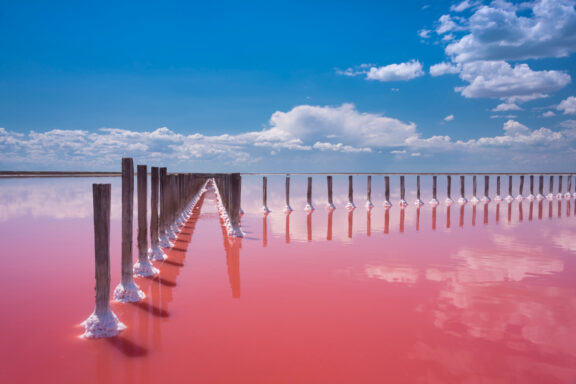
Kherson Oblast was one of the first to fall during the Southern Ukraine offensive. Its administrative center, Kherson city, is the only regional center the Russians have managed to take over since the invasion.
Meanwhile, the natural sights and settlements near the oblast’s tourist attractions remain vulnerable to massive fires and destruction from Russian artillery. As a result, it is highly discouraged to visit Kherson Oblast.
Khmelnytskyi Oblast
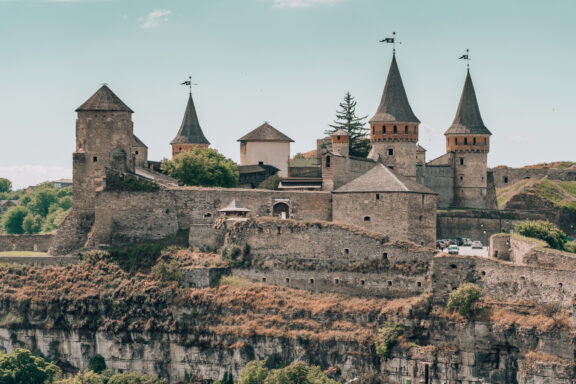
Khmelnytskyi Oblast is an administrative region in the west-central part of Ukraine. The population is 1,240,624, with 95.24% speaking Ukrainian and 4.09% speaking Russian as their first language. Other languages like Polish, Belarusian, Armenian, Moldovan, and Hebrew have speakers amounting to less than 1%.
The pearl of Khmelnytskyi Oblast is the ancient fortress of Kamianets-Podilskyi. It stands as one of the best examples of defensive architecture and Medieval history in Europe.
Not far lies Bakota, also dubbed as the Atlantis of Ukraine.
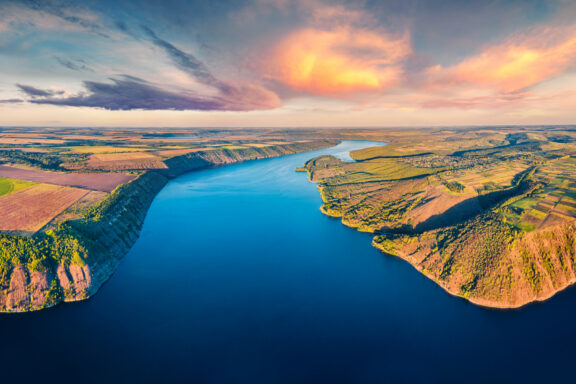
Although the blue bays bring peace to travelers, pain still shrouds inhabitants who were forced to resettle after the Soviet regime’s decision to expand the Novodnistrovska Hydroelectric Power Plant resulted in the Dniester River’s water levels flooding 28 villages.
Khmelnytskyi Oblast has only suffered from minor attacks during the invasion; however, it remains unsafe to travel to any of the Ukrainian oblasts.
Kyiv Oblast
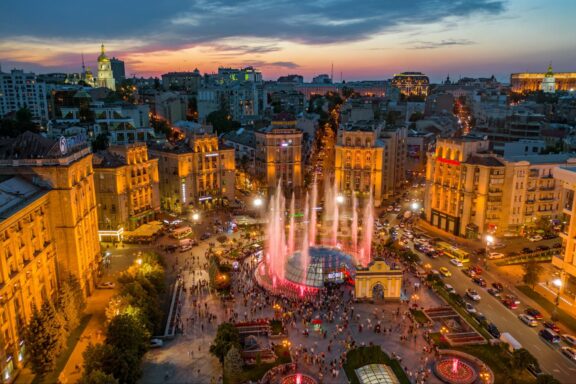
Kyiv Oblast is a region in northern Ukraine. Its administrative center is the city of Kyiv; however, the Ukrainian capital is formally recognized as a separate administrative territorial unit.
The population of the Ukrainian oblast is 1,782,751. 92.27% speak Ukrainian, while 7.17% speak Russian. Other languages like Belarusian, Bulgarian, Armenian, Polish, Moldovan, and Romani have speakers less than 1%.
The northern area of Kyiv Oblast is part of the Chernobyl Exclusion Zone, which is its most popular travel destination.
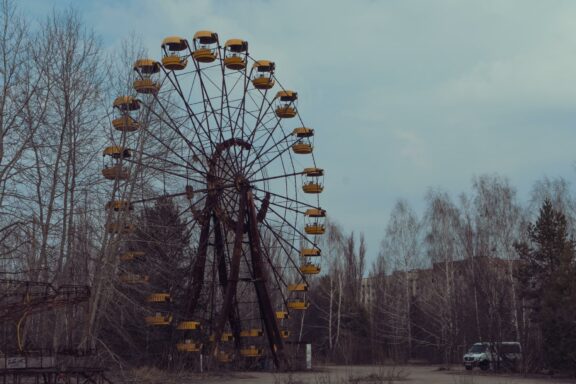
First-hand trips to the site of history’s worst nuclear disaster, including the Chernobyl nuclear power plant, Pripyat town and the homes of its elderly resettlers, are open to tourists.
Although it was captured by the Russians at the onslaught of the invasion, permitted tour destinations in the zone remain intact. However, offices and accommodation within the zone were looted and damaged, and the radioactive Red Forest showed signs of scorching.
Ukrainian troops have regained full control of the Kyiv Oblast since April 2022; however, visits to the region remain unsafe.
Kirovohrad Oblast
Kirovohrad Oblast is an administrative division in Ukraine with a population of 913,713. 88.89% speak Ukrainian while 10.02% speak Russian. Other languages like Belarusian, Armenian, Bulgarian, Moldovan, Romanian, Romani, and Hungarian have speakers amounting to less than 1%.
The region does not offer as many tourist attractions as other oblasts in Ukraine; however, interested travelers can make a trip to Khutir Nadia State Museum Reserve, the Kirovohrad Art Museum and the Transfiguration Cathedral.
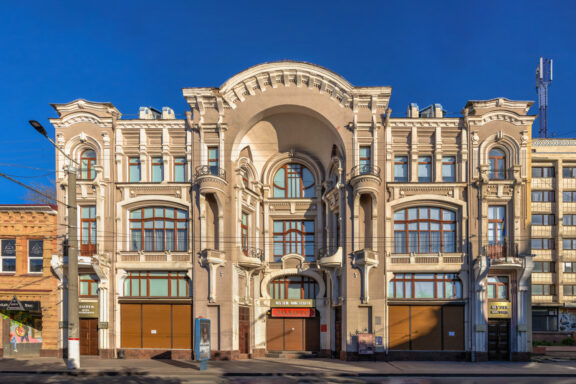
Kirovohrad Oblast has been spared from most of the war’s violence; however, it is still not recommended traveling to any of the Ukrainian oblasts.
Luhansk Oblast
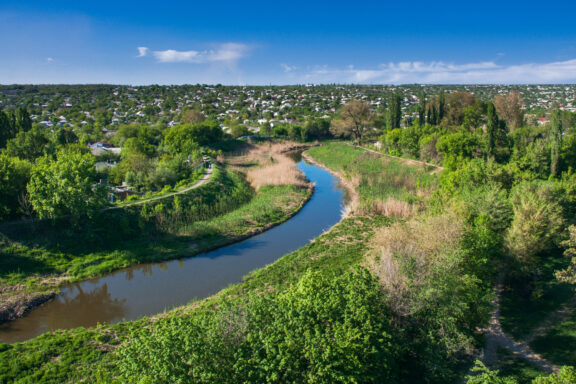
Luhansk Oblast is located in the easternmost region of Ukraine. Its population is 2,116,725. Bordering Russia, 68.84% speak Russian as their mother tongue, while 30.01% speak Ukrainian. Other languages like Belarusian, Bulgarian, Armenian, Moldovan, and Romani have speakers less than 1%.
Luhansk city holds the region’s top tourist attractions such as St. Volodymyr’s Cathedral, the Park of Heroes of the Great Patriotic War, Luhansk University, Kraevedchesky Museum and Radianska Street.
As for religious sites, Luhansk Oblast has St. Catherine’s Church, Church of the Nativity, and the Mother of God “Joy of all who Sorrow” Church.
Parts of Luhansk Oblast are controlled by the self-declared Luhansk People’s Republic. The Ukrainian province has been a flashpoint between the Ukrainian army and Russian forces and pro-Russian separatists.
Because of this, plenty of the cities and settlements in the contested Ukrainian oblast have been heavily bombarded. Damages include the aforementioned churches.
Visiting Luhansk Oblast is highly discouraged until the region’s occupied sections are demilitarized and returned to Ukraine.
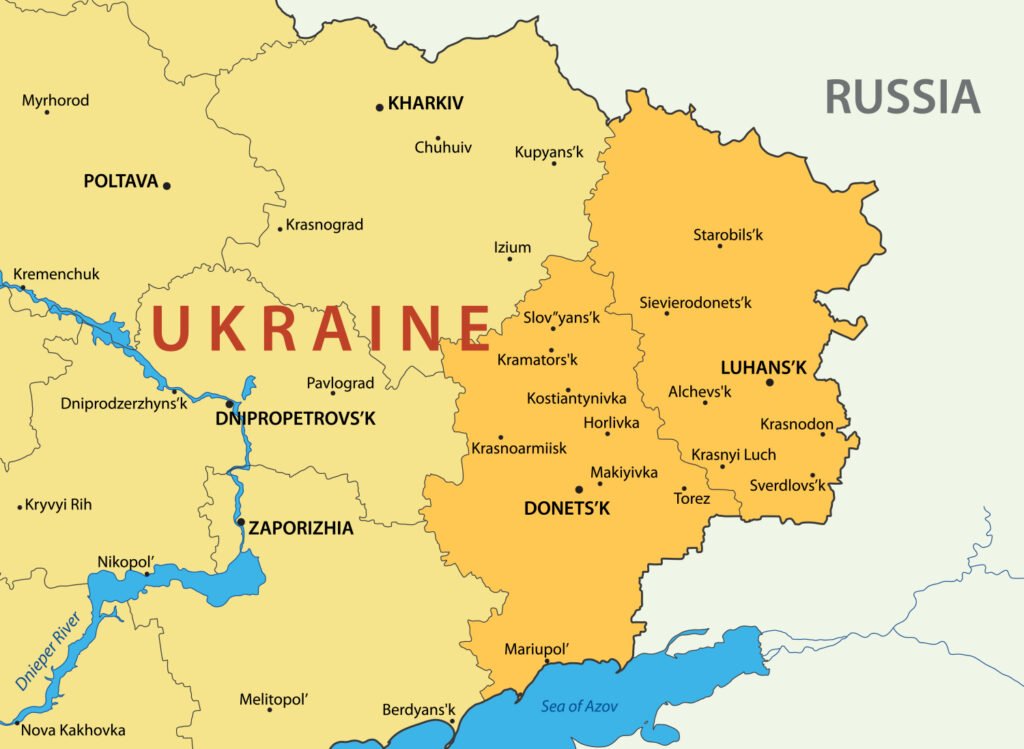
Lviv Oblast
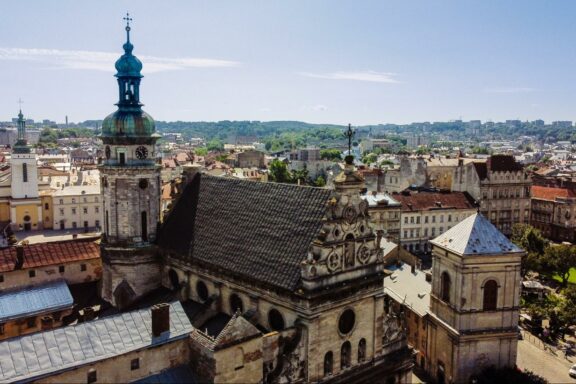
Lviv Oblast is an administrative region in western Ukraine and bordered by Poland.
The region’s population is 2,479,380. Ukrainian is the most dominant language. 95.32% of Lviv Oblast residents declare it their mother tongue, while only 3.77% choose to speak Russian. Other languages such as Polish, Belarusian, Armenian, Romani, Hungarian, and Hebrew have speakers amounting to less than 1%.
Numerous architectural, cultural and historical tourist attractions are housed within the oblast.
The crown jewel of the region’s tourism is the historic center of Lviv, which is included in UNESCO’s World Heritage List. The city’s Old Town boasts sophisticated architecture and 2,000 registered landmarks in mint condition.
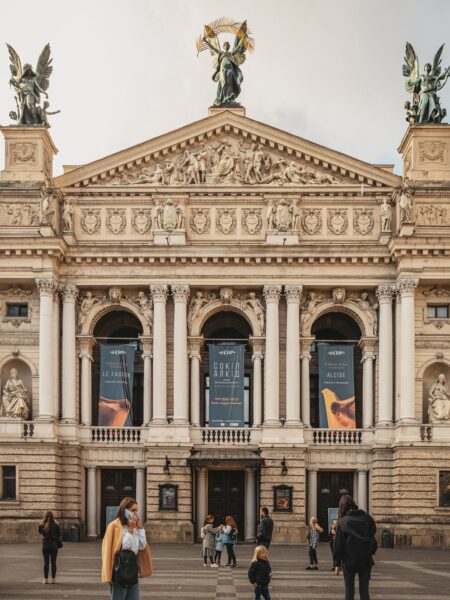
After a full day exploring the city, travelers can enjoy a pint of local beer or a full tasting at the Vivarnya Beer Cultural Experience Center.
The Golden Horseshoe of Ukraine—Olesko Castle, Zolochiv Castle, Pidhirtsi Castle and Svirz Castle—is also a popular tour option for travelers.
With the Carpathian Mountains resting on its southwestern section, Lviv Oblast also offers hiking destinations like Mount Pikui, Mount Magura and Mount Parashka.
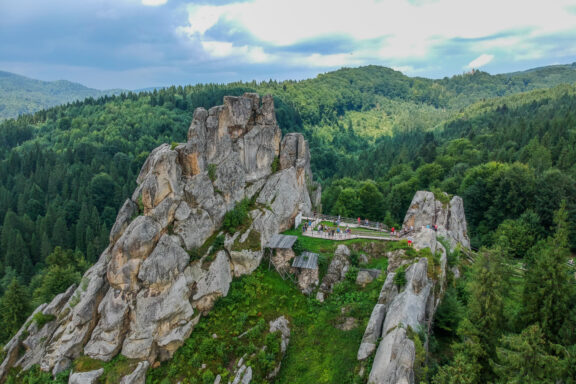
Other popular destinations include the Medieval cliffside Fortress of Tustan, the Lviv Historical Reserve in Zhovkva, the Krekhiv Monastery of St. Nicholas, and the State Historical and Cultural Reserve in Belz.
Although the region and its tourist sites have been spared from fighting that has ravaged oblasts closer to Russia, the Ukrainian province remains unsafe to visit.
Mykolaiv Oblast
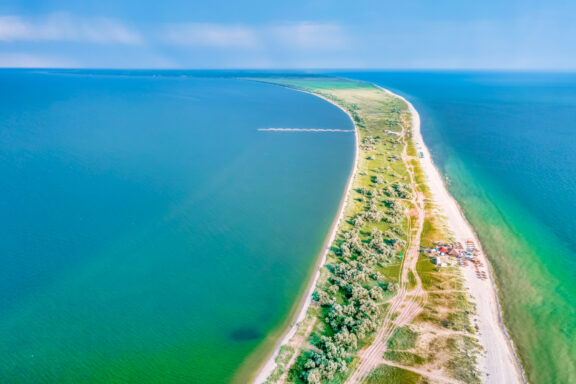
Mykolaiv Oblast is an oblast in southern Ukraine with a population of 1,107,679. 69.20% of its residents speak Ukrainian as their first language, while 29.26% speak Russian. Other languages like Moldovan, Belarusian, Bulgarian, Armenian, Gagauz, German, Polish, Romani, and Hebrew have speakers amounting to less than 1%.
Kinburn Spit holds a beloved place in the hearts of Ukrainians. A favorite vacation spot for locals, the myth-laced peninsula attracts tourists with pristine beaches and vibrant wildlife.
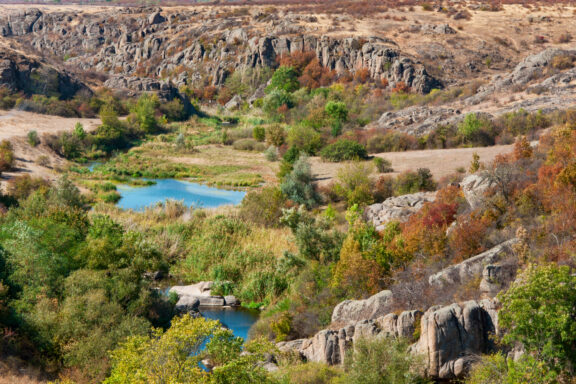
Aktove Canyon is another popular tourist attraction in Mykolaiv Oblast. Housing unique forest and aquatic ecosystems and rock ensembles, the site attracts adventurous travelers, especially climbing enthusiasts.
Mykolaiv Oblast currently stands at the frontline against Russia’s southern offensive. Ukrainian forces continue to launch counterattacks in the region, delaying any offensive that can be launched on the strategically crucial port city of Odessa.
Meanwhile, the floodplains and thousand-year-old forests of Kinburn Spit, which has been captured by Russian troops, have been suffering from serious fires. The reported fires covered nearly 4,000 hectares of forests on the border of Mykolaiv and Kherson oblasts.
As such, it is not advisable to travel to Mykolaiv Oblast.
Odessa Oblast
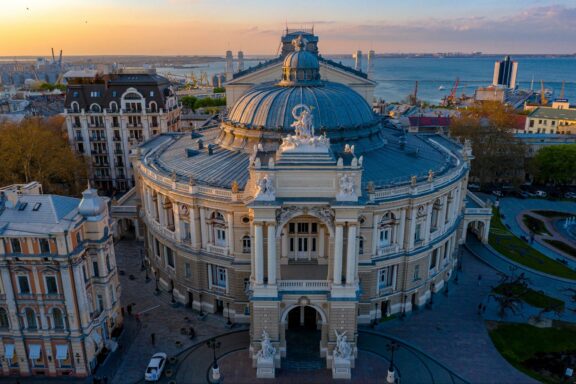
Odessa Oblast occupies the northwest section of the Black Sea. The region’s population is 2,357,047.
Nearly half of Odessa Oblast considers Ukrainian their mother tongue. 46.28% of its inhabitants speak Ukrainian as their first language. Russian comes in close with 41.95%.
The oblast also recognizes other languages like Bulgarian, with speakers comprising 4.87% of the local population. Since the region borders Moldova, 3.78% speak Moldovan as their first language, and since it is also home to the Gagauz minority, 0.90% speak the endangered Gagauz language.
Other languages with speakers amounting to less than 1% include Armenian, Belarusian, Romani, German, Polish, Greek, and Hebrew.
The oblast’s coastal line gives travelers various options for their dose of sun, sand, and sea; however, Odessa region offers much more than just a day at the beach or a night out at its many prestigious clubs.
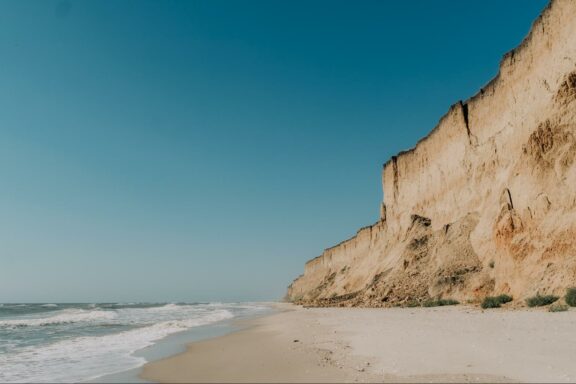
Odessa city is teeming with cultural and historical landmarks, from the iconic Odessa Opera House to the grand Potemkin Stairs, which is crowned with the statue of Duke de Richelieu.
Beneath the city of Odessa lies the world’s largest catacomb system, the Odessa Catacombs. Adventurous explorers can get lost in the labyrinth-like network of tunnels and unravel stories of Odessa’s unmapped underground.
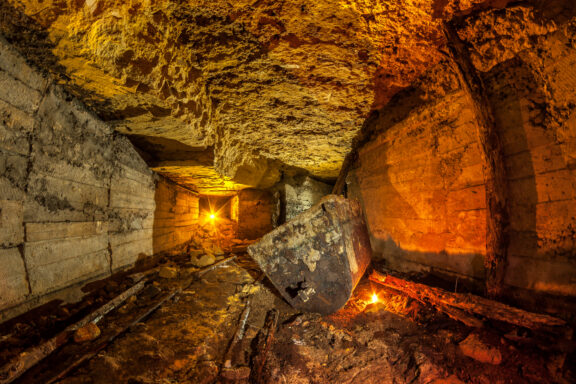
The oblast is also home to Akkerman Fortress, Ukraine’s largest fortification.
Due to Russia’s intent on completely capturing Ukraine’s Black Sea coast, it is not advisable to visit Odessa Oblast. Odessa city remains a strategic target of Russian forces, and the administrative center’s historical and cultural landmarks remain under threat of air attacks.
Poltava Oblast
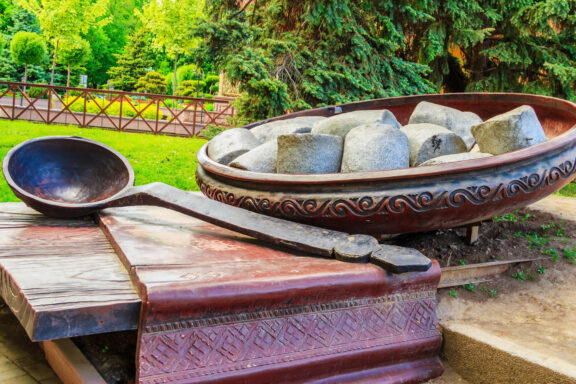
Poltava Oblast is an oblast in central Ukraine. Bounded to the southwest by the Dnipro River, the region is home to 1,363,691 residents, with 89.98% Ukrainian speakers and 9.47% Russian speakers.
Other languages in the oblast that have speakers amounting to less than 1% include Belarusian, Armenian, Bulgarian, Moldovan, Romani, and Hungarian.
The oblast does not offer plenty of tourist attractions, but interested travelers can swing by Poltava city and sample halusky, traditional dumplings native to the Ukrainian region.
Russian forces continue to shell Poltava Oblast, making it unsafe to visit.
Rivne Oblast
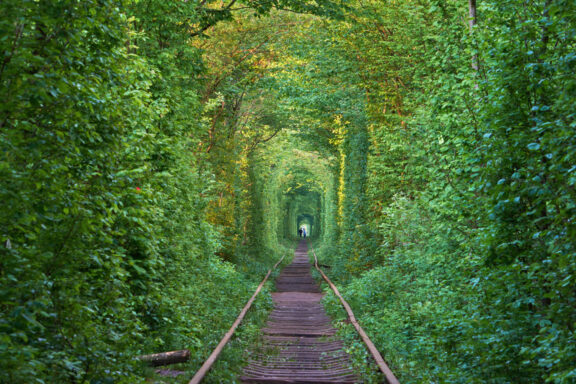
Situated in northwestern Ukraine, Rivne Oblast is home to 1,147,396 inhabitants. Ukrainian is the most dominant language, with speakers comprising 97% of the population. Meanwhile, 2.73% speak Russian, and less than 1% speak other languages like Belarusian, Armenian, Moldovan, Polish, and Romani.
Ukraine’s most Instagrammable spot, the Tunnel of Love, can be found in the region. Its perfectly arched trees and a rustic railway can be visited all year round, with each season painting a different picture of the tourist destination.
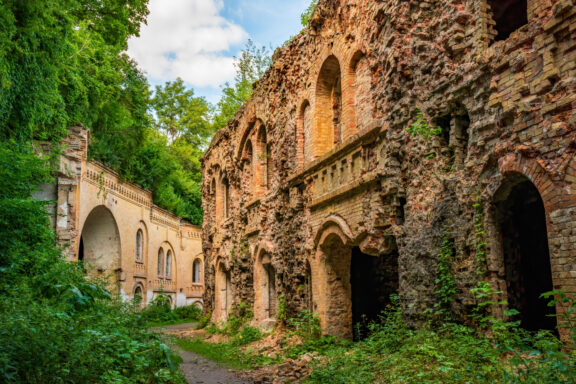
Travelers often combine their trips to the romantic photo spot with excursions to Tarakaniv Fort, Dubno Castle or the charming microcity of Rivne.
While no damages have been reported regarding these attractions, it is best to avoid trips to Rivne Oblast as it remains a target of missile strikes.
Sumy Oblast
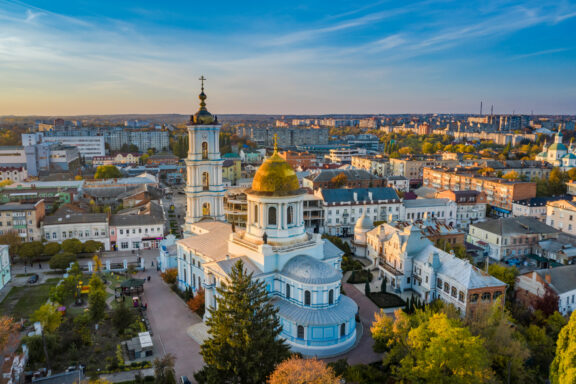
Sumy Oblast, located in northeastern Ukraine, is home to 1,051,260 residents. Despite bordering Russia, 83.29% speak Ukrainian as their first language. Only 15.50% speak Russian, while other languages like Belarusian, Armenian, Moldovan, and Romani have speakers that take up less than 1% of the population.
Compared to other Ukrainian oblasts, Sumy does not offer plenty of tourist destinations; however, the oblast still houses significant attractions such as the Trinity Bishops Cathedral, the Spaso-Preobrajenski Church, the Holy Resurrection Cathedral, the Sadko Fountain, the House of Estate Manager Leopold Koenig, Countess Shterich’s Palace, and the Okhtyrka City Museum of Local Lore.
Due to intense artillery fire in the oblast, several tourist sites like the House of Estate Manager Leopold Koenig and the Okhtyrka City Museum of Local Lore have been damaged.
Although Russian forces have withdrawn from the Ukrainian region, border settlements in Sumy Oblast continue to be subject to heavy bombardment, making the province unsafe to visit.
Ternopil Oblast
Ternopil Oblast is a region in western Ukraine with a population of 1,027,311. 98.34% speak Ukrainian as their mother tongue, while only 1.19% speak Russian. Other languages like Belarusian, Armenian, Moldovan, Polish, and Hungarian have speakers amounting to less than 1%.
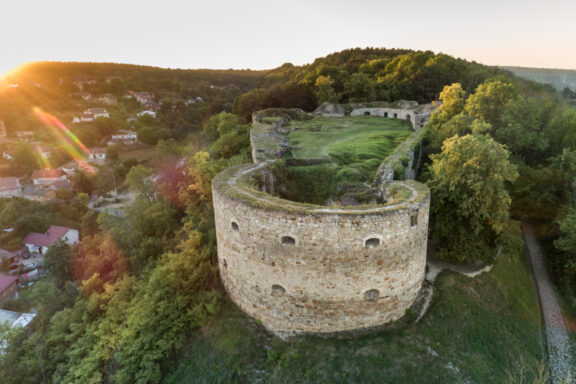
A third of Ukrainian castles are in Ternopil. Palaces worth seeing include Ternopil Castle, Berezhany Castle, Chortkiv Castle, Yahilnytsky Castle, Yazlovets Castle, Kryvche Castle, Bila Krynytsia Palace, Skalat Castle, Terebovlia Castle, and Terebovlya Mykulynets Castle, among others.
Spelunkers will also enjoy exploring Ternopil Oblast’s underground realm. The region is home to Optymistychna Cave, the world’s longest gypsum cave. Other renowned caves include Crystal, Mlynky, Pearl and Uhryns’ka Cave.
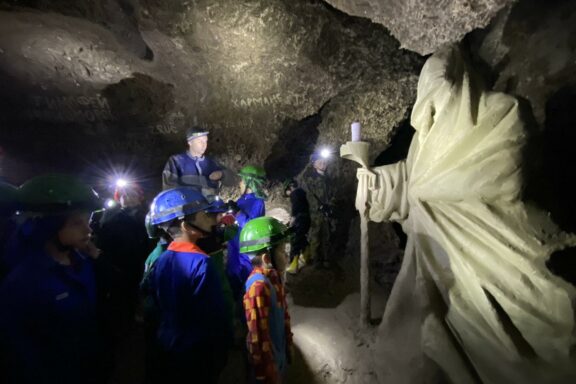
Nature lovers can also chase the oblast’s many waterfalls like Chervonogorodsky Waterfall and Rusyliv Falls.
There have been no reports of these tourist attractions being damaged. Compared to other Ukrainian oblasts, Ternopil Oblast is more peaceful; however, constant air raids make the region still unsafe to visit.
Vinnytsia Oblast
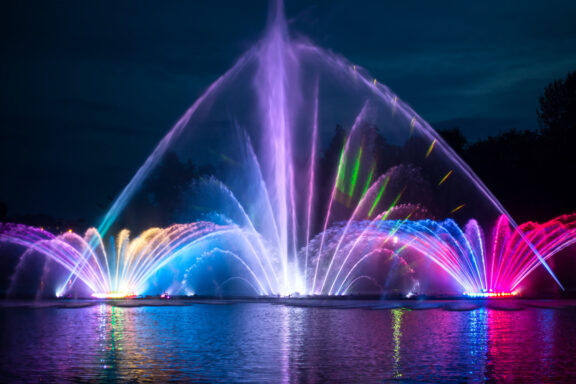
Vinnytsia Oblast is an oblast in west-central Ukraine. Its population is 1,522,038. 94.81% speak Ukrainian while 4.74% speak Russian. Other languages such as Belarusian, Bulgarian, Moldovan, Armenian, Polish, Romani and Hebrew have speakers accounting for less than 1% of the population.
Ask any Ukrainian about what to see in Vinnytsia Oblast, and they’ll recommend the Roshen Fountain, Europe’s largest floating fountain built on the Buh riverbed. The multimedia fountain features a phenomenal show of colors, lights, and sounds.
Much like other Ukrainian oblasts, Vinnytsia Oblast is still under attack. While the city remains intact, travel to the region remains strongly discouraged.
Volyn Oblast
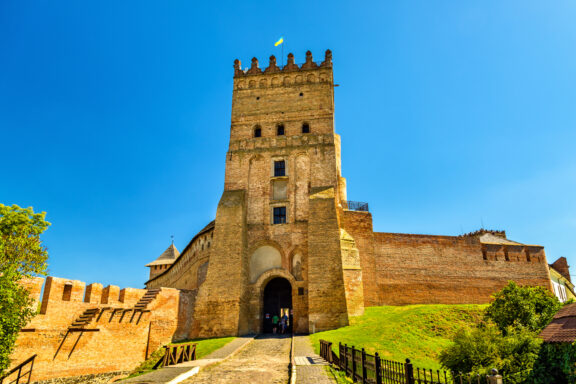
Volyn Oblast is a region in northwestern Ukraine that borders Poland and Belarus. The oblast’s population is composed of 1,024,669 inhabitants. 97.26% claim Ukrainian as their mother tongue, while only 2.51% pick Russian. Other languages like Belarusian, Armenian, Moldovan, Polish, and Hungarian have speakers amounting to less than 1%.
While not a popular tourist destination, Volyn Oblast is an undiscovered gem with plenty of tourist sites. The historical city of Lutsk is home to the Lubart’s Castle, one of Ukraine’s oldest and most preserved palaces.
The dungeons of Lubart’s Castle along with the extensive dungeon system of Lutsk can also be explored by travelers to the oblast.
Volyn Oblast also has other cities worth exploring. Kovel is one of Ukraine’s oldest settlements. Tourists can visit the wooden Church of St. Anne and the Resurrection Cathedral or have a stroll on Lublin Alley.
A visit to Kovel can be coupled with the nearby city of Kolodyazhne, which has a museum-library dedicated to Ukrainian writer Lesya Ukrainka.
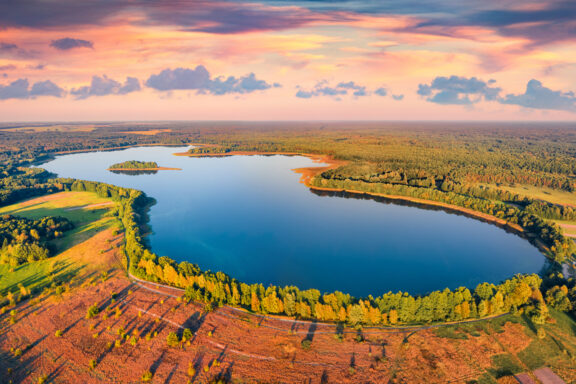
For those looking to spend time in nature, Volyn Oblast has the Shatsky Lakes. Known as “The Blue Eyes of Volyn,” tourists flock to the pristine lakes for their healing properties and outdoor recreation.
Volyn Oblast has a total of 265 lakes. White Lake, Zorinsky Lake, Holy Lake, Lyub’yazh Lake, Perevyrs’ke Lake, Dobre Lake, Chiste Lake, Somyn Lake, Zasvyns’ke Lake, and Chervyshcha Lake are just some of the noteworthy lakes travelers visit when in Volyn.
Unfortunately, Volyn Oblast remains dangerous, with missile and bomb strikes from Belarus targeting the region’s civilian and military objects. Despite Volyn Oblast’s tourist attractions surviving the attacks, traveling to the oblast is still strictly discouraged.
Zakarpattia Oblast (Transcarpathian Oblast)
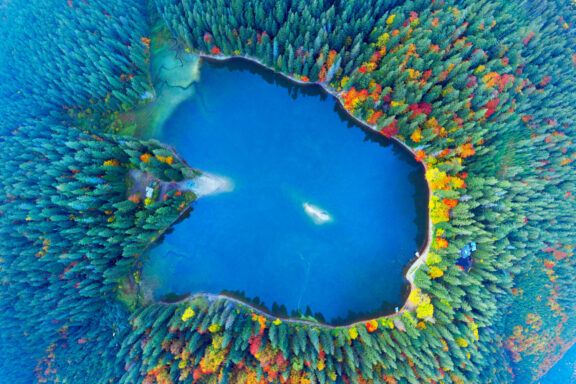
Zakarpattia Oblast is a region located in Ukraine’s extreme southwest, bordering Poland, Slovakia, Hungary, and Romania. Its population is 1,247,296.
Ukrainian is the most dominant language, with 81% of the population using it as their first language. This is followed by Hungarian, with speakers accounting for 12.65% of the population. Only 2.90% speak Russian, while 2.57% speak Romanian. Other languages like Slovak, Belarusian, Bulgarian, Romani, Armenian, German, Moldovan, Polish, and Hebrew have speakers amounting to less than 1%.
Outdoor enthusiasts will find paradise in Zakarpattia Oblast.
Mountains dominate nearly two-thirds of the region. Sharing the famous Chornohora Range with neighboring Ivano-Frankivsk Oblast, travelers often flock to the region to traverse Ukraine’s loftiest summits. This includes Mt. Hoverla, the country’s highest peak.
Another famous trekking route in the region is the Svydovets Range, where adventurous travelers can observe the area’s lush landscapes and see the high mountain lakes of Ivor, Vorozheska, Herasashka, and Apshynets.
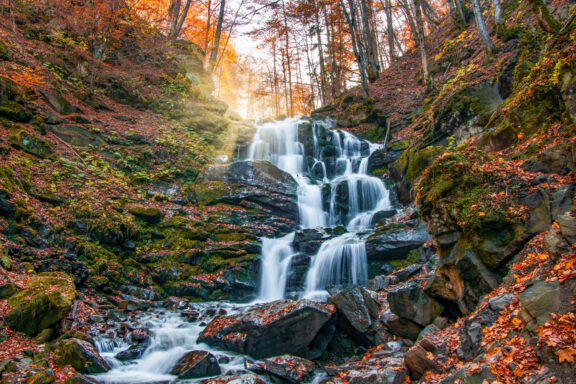
Two of Ukraine’s Seven Natural Wonders are also situated in Zakarpattia Oblast—the mystical Synevir Lake and the enamoring Shypit Waterfall.
Rock climbers can also enjoy climbing tours in Tereblja Valley. Meanwhile, in winter, skiers can slide down the slopes of Dragobrat, Ukraine’s highest ski resort.
For travelers seeking passive recreation, the city of Uzhhorod presents plenty of lovely historical and religious landmarks. It is also home to Europe’s longest Linden Alley, which stretches along the beautiful River Uzh.
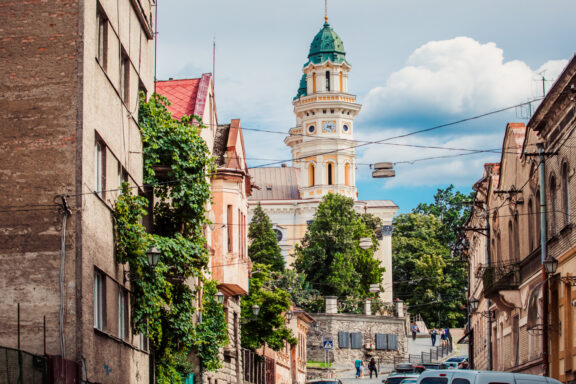
From Uzhhorod, travelers can make a day trip to nearby Mukachevo and explore Palanok Castle.
In spring, these two cities are painted pink with blooming sakura trees, drawing both local and foreign tourists who wish to see and photograph these blossoms.
Although Zakarpattia Oblast stands furthest from the line of fire of Russian invaders, traveling in Ukraine is strictly discouraged due to the constant threat of missile attacks. No reports of destruction have surfaced regarding the oblast’s tourist attractions.
Zaporizhia Oblast
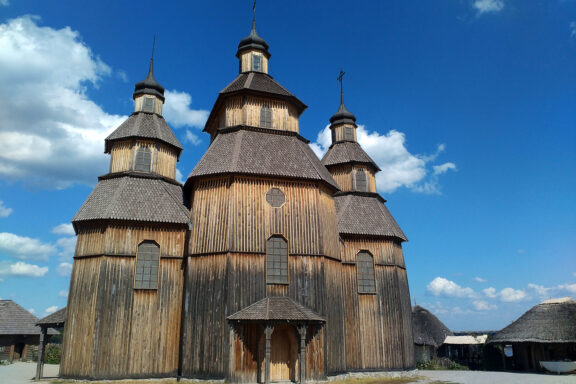
Known for its Cossack history, Zaporizhia Oblast is one of the biggest administrative centers in southern Ukraine. Its population is 1,665,726.
The oblast enjoys a fair share of Ukrainian and Russian speakers. 50.20% use Ukrainian as their first language, while 48.19% opt for Russian. Other languages with speakers comprising less than 1% of the population include Bulgarian, Belarusian, Armenian, Gagauz, Crimean Tatar, Moldovan, German, Romani, Hungarian, Hebrew, and Greek.
Khortytsia Island is the region’s most famous tourist attraction. The reserve is acknowledged as quintessential for the revival of Ukrainian history.
The island has its own historic and cultural center that resembles a generalized picture of the Cossack Sich in Khortytsia and a museum of navigation comtaining a Cossack boat. Visitors can also admire the performance of the Cossack interactive theater, where men dressed as Cossacks present the use of Cossack weapons.
In a heroic resistance that would make their Cossack ancestors proud, Zaporizhia Oblast continues to combat the full-scale Russian aggression. Although Khortytsia Island has been spared from destruction, it is still not recommended to visit the war-torn region.
Zhytomyr Oblast
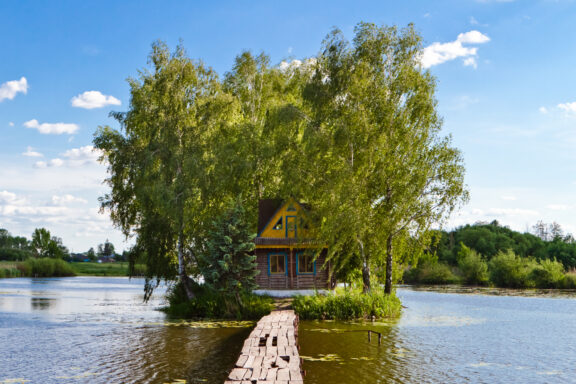
Zhytomyr Oblast is an oblast in northern Ukraine, bordering Belarus. Its population is 1,196,264, with 93.02% speaking Ukrainian as their mother tongue. Meanwhile, only 6.57% speak Russian, and less than 1% speak other languages like Belarusian, Armenian, Moldovan, Polish, German, Romani, and Hebrew.
Travelers often pass through Zhytomyr Oblast in favor of other regions in Ukraine; however, the province also has plenty of interesting tourist attractions.
One of these places is the Kaminne Selo Geological Reserve with giant boulders resembling a settlement amidst a forest.
Another natural site in the Ukrainian region is Korostyshiv Quarry, a scenic artificial lake that attracts adventure lovers.
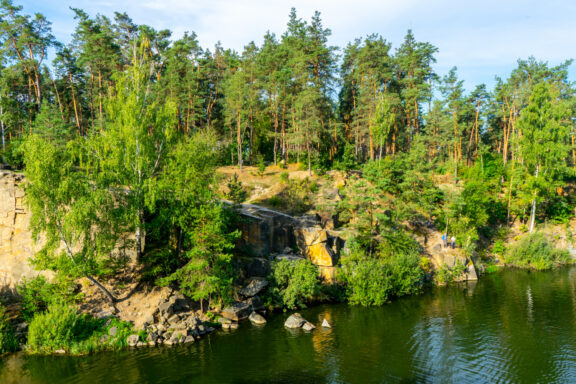
Meanwhile, travelers looking for a more relaxing recreation can visit the Island of Love, a romantic island with a small wooden fisherman’s house surrounded by birch trees.
Zhytomyr Oblast also has the Neo-Gothic Catholic Church of St. Clare, which exhibits a combination of Romanesque and Gothic styles that is uniquely uncommon for Ukrainian architecture.
Russian shelling has decimated several cultural attractions in the oblast. The Church of St. Nicholas and the Church of the Blessed Virgin of the Ovruch Eparchy.
The region continues to endure air raids and prepares for further attacks, which makes Zhytomyr Oblast unsafe to travel to.
The Autonomous Republic of Crimea
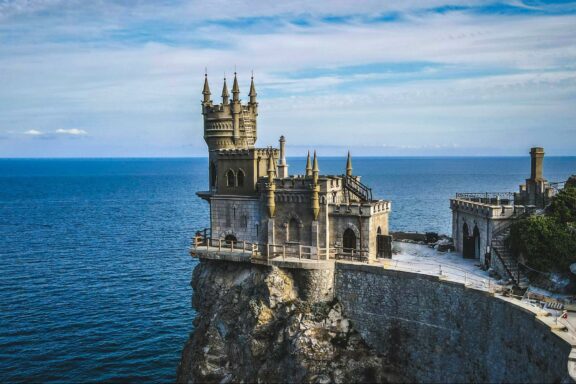
Illegally invaded and annexed by Russia in 2014, the Autonomous Republic of Crimea is by law an autonomous republic in Ukraine. Russian law refers to the Ukrainian territory as a federal subject; however, the illegal annexation is not recognized by most countries, including Ukraine.
Its population is 2,416,856. Unlike the majority of oblasts in Ukraine, Russian is Crimea’s most dominant language, with 76.55% of its residents declaring it their mother tongue. This is followed by those who speak Crimean Tatar, which accounts for 11.33% of the population. Only 10.02% speak Ukrainian as their first language, and other languages like Belarusian, Armenian, Bulgarian, Gagauz, Moldovan, Romani, German, Polish, and Greek have speakers amounting to less than 1% of the population.
Crimea boasts an impressive breadth of landscapes, from endless dramatic cliffs to breathtaking coastal views crowned with colorful sunsets.
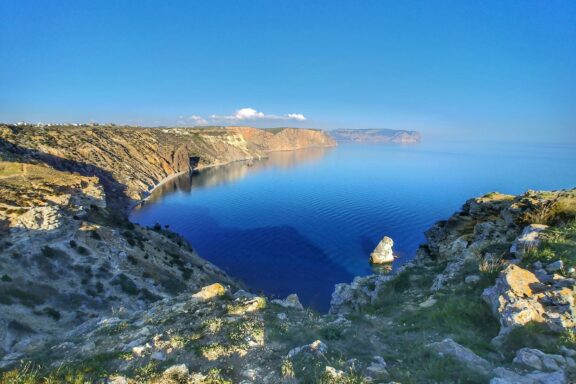
Crimea’s most iconic attraction is the Swallow’s Nest, a fairytale-like cliffside castle overlooking the Cape of Ai-Todor. Other historical sites include the stately fortifications of Genoese Fortress and the Livadia Palace, which was a summer retreat for Russia’s last tsar.
The Ukrainian region’s nature is stunning and unique, with its many pebble beaches and seas lined with golden sand, its heart-shaped Kadykovsky Quarry, the towering Aq Qaya, the pink lake of Sasyk-Sivash, and the views over Cape Fiolent.
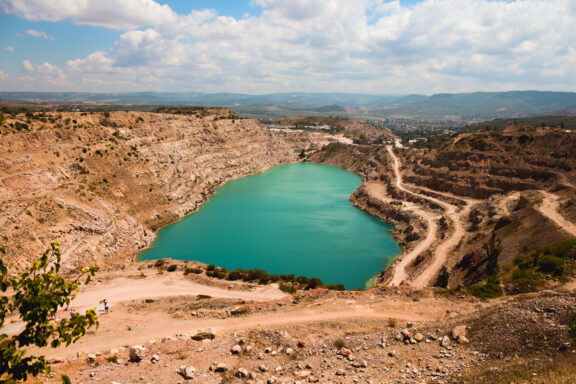
Before Crimea became the center of Russia’s deadlock with Ukraine in 2014, the peninsula lured a growing number of tourists. The future status of Crimea has yet to be negotiated, and the peninsula remains a hotbed in the present invasion, with the Kremlin’s goals of controlling the waters off the peninsula’s coast and building a land bridge between Russia, Donbas and Crimea.
While no damages on its tourist attractions have been reported, travel to the peninsula is discouraged. Additionally, any visit to Crimea requires a Russian visa and access to the peninsula can only be obtained through Russia, which is considered illegal entry by the Ukrainian government.
Kyiv City
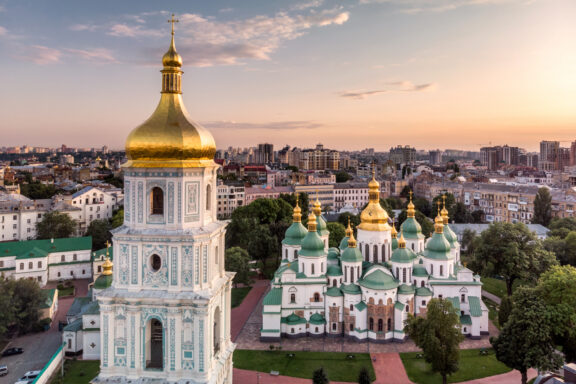
Kyiv is the chief and capital city of Ukraine. Although it serves as the administrative center of Kyiv Oblast, the city is its own administrative region, enjoying a special status with an establishment of local self-government that coexists with the system of state administration.
Its population is 2,920,873. 72.15% of its residents speak predominantly Ukrainian while 25.27% speak Russian. Other languages like Belarusian, Armenian, Bulgarian, Moldovan, German, Polish, Romani, Hungarian, and Hebrew have speakers amounting to less than 1%.
The capital is abound with tourist attractions, two of which are named UNESCO World Heritage sites: St. Sophia’s Cathedral with its striking and “indestructible” Virgin Orans fresco that is said to protect Kyiv as long as it stands, and the Kyiv Pechersk Lavra, an ancient monastic complex known for its buried monks and underground caves.
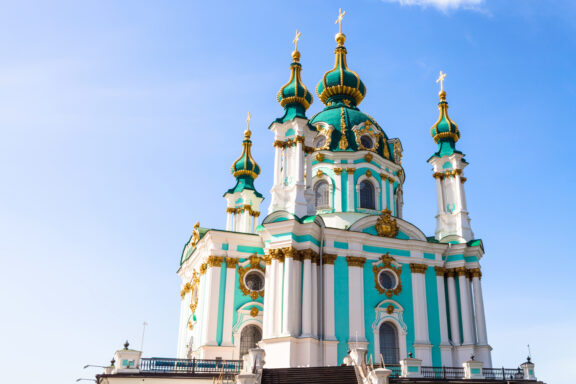
Other noteworthy religious sites depicting the grandeur of Orthodox architecture include St. Andrew’s Cathedral, St. Michael’s Golden-Domed Monastery, St. Volodymyr’s Cathedral, and St. Panteleimon’s Cathedral.
Travelers can also walk along Kyiv’s main street, Khreshatyk, and visit the Independence Square, the historic site of civilian demonstrations for Ukraine’s freedom and independence. Walking further leads to the iconic Motherland Monument, which celebrates the USSR’s victory over Nazi Germany.
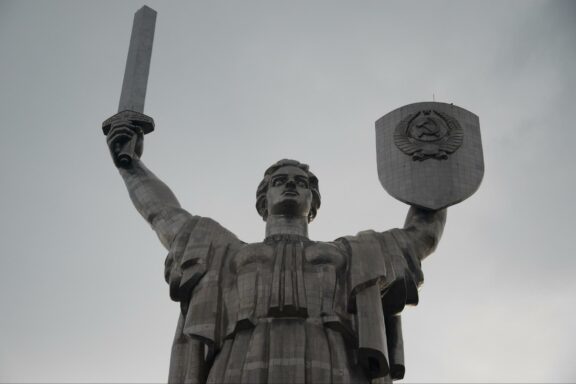
When Russia launched a full-scale invasion of Ukraine, it set its sights on capturing the capital, deploying elite forces to seize the national seat of power.
Predicted to fall in 72 hours, Kyiv withstood the attacks and became Russia’s greatest defeat, but not without destruction from Russian shelling. Damages include over 200 houses and the Ukrainian holocaust site of Babyn Yar.
While many locals have since returned to the capital, visiting Kyiv is strictly discouraged, as the situation in Ukraine remains highly volatile.
Sevastopol
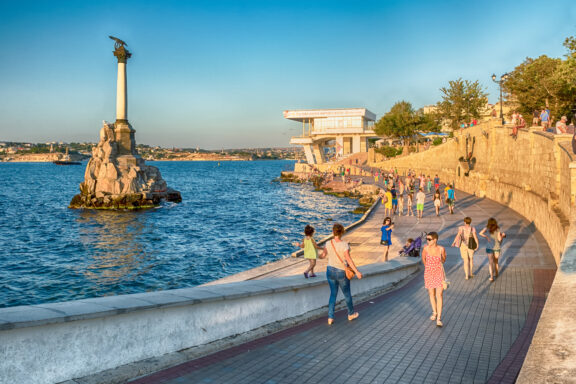
Sevastopol is a Ukrainian port city with special status. It exercises self-government, with executive power implemented by local state administration.
The largest city of Crimea is home to 513,149 inhabitants. Unlike other regions in Ukraine, Russian dominates the municipality, with speakers comprising 90.56% of the population. Only 6.76% speak Ukrainian, and less than 1% speak other languages like Crimean Tatar, Belarusian, Bulgarian, Armenian, Gagauz, Moldovan, and Polish.
The Monument to Scuttled Ships is Sevastopol’s visiting card. Commemorating the scuttling of the Russian Navy in the Crimean War, the landmark was the state’s emblem during the Soviet period.
Other sites that commemorate the Crimean War include the bronze statue of naval commander Admiral Nakhimov, the Black Sea Fleet Museum and St. Vladmir’s Admirals Cathedral, the resting place of lauded Russian admirals and the church most associated with the Russian navy.
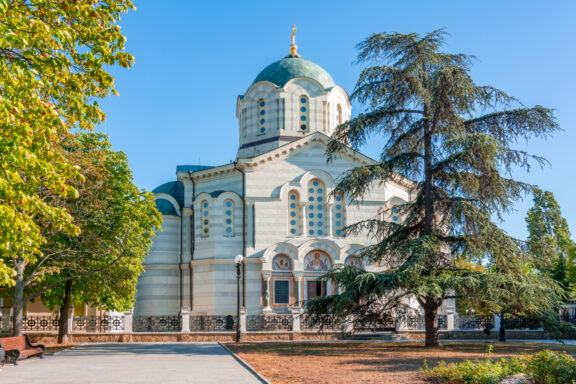
Visitors can also enjoy strolling along Grafskaja Quay on Nakhimov Square or Malakhov Hill, which also houses monuments and a museum dedicated to the Battle of Sevastopol during World War II.
The naval base in Sevastopol currently plays a critical role in the ongoing Russian-Ukrainian war. Illegally annexed by Russia in 2014, it provides military strength to Russia in the ongoing invasion.
Although no damages have been reported on Sevastopol city, its strategic military location makes it a dangerous travel destination.
Ukraine Statistical/Polling Map
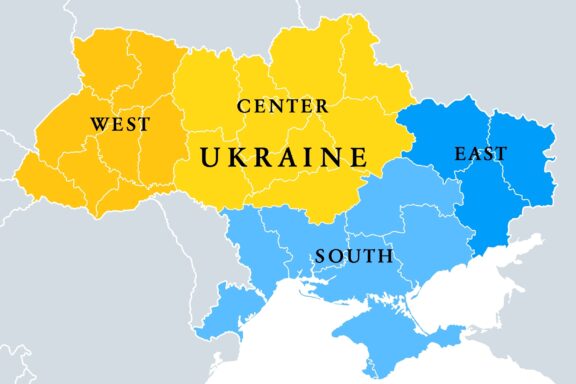
Image Sources and Copyright Information
- Map of Ukraine Showing Oblasts and Borders: © Peter Hermes Furian/Shutterstock
- Color-Coded Map of Ukraine Showing Regional Divisions: © Peter Hermes Furian/Shutterstock